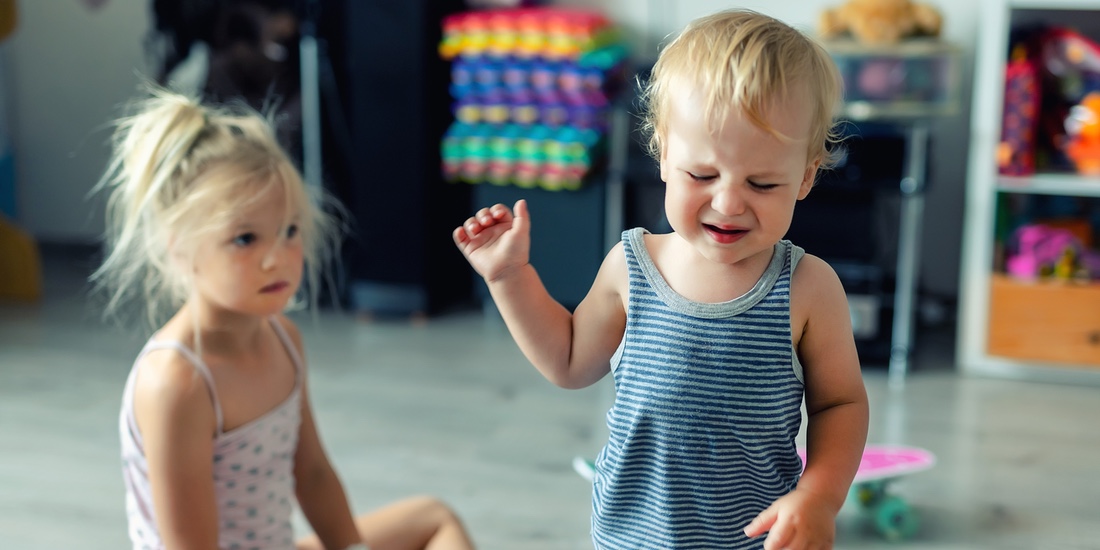Knowing why a child hits is the first step in handling a challenging ‘hitting’ situation. Next, how should you respond – to the child that hit? To the person that is hurt? Here’s a simple and printable guide to help you remember what to say and do in the moment and afterwards.
Do
Hitting behavior is frustrating for both a child and grown-up. It is important to be consistent with your approach, while at the same time modifying based on what your child (and you) need in the moment. Setting a clear boundary while still addressing the behavior in a respectful, intentional way communicates to your child that there is an expected, consistent outcome when they make certain choices. This provides comfort and security to a child, even if they push against that boundary.
What You Could Do and What You Could Say
These strategies are appropriate for most children up to age four (i.e., for younger children who may not yet be verbal enough to articulate their feelings, and/or the grown-up is not able to rationalize and reason with the child).
In the Moment
| What You Could Do | What You Could Say |
|
|
|
|
|
|
|
|
After the Hitting
| What You Could Do | What You Could Say |
|
|
Helpful Tips and FAQs
What Do I Do if My Child Repeatedly Hits (After I’ve Said/Done the Above)?
- Stop the destructive behavior before you connect with the child.
- Separate the child from the situation / setting (especially if the child is continuously unsafe in the same situation). A child is likely feeling out of control and we can help them get back to feeling in control. This might mean leaving and trying again another time.
- “You aren’t being safe with your body. I’m not going to let you hit. Let’s go somewhere to take a break.”
- Stay with them, hold them, encourage them to let the feelings out in appropriate ways (see above).
- Employ the mindset, “We’re going to figure this out together.” Proudly and lovingly say this with your child each time an incident occurs. Avoid emphasizing that what they are doing is “bad” or “wrong”.
- Look for triggers and behavior patterns.
- Pay close attention to when hitting happens: Was your child tired? Hungry? Overstimulated?
- Noticing and addressing these needs in advance can preempt hitting behavior.
- If a child is hitting repeatedly in multiple contexts, they are likely communicating that something feels emotionally unsafe or out of control.
- Consider the context of when and where you think they might hit. During those times, stay physically close to them so you can intervene and gently redirect the behaviors before they happen. Let your child know that you are there with them to figure this out together.
My Child is Over the Age of 4, I Can Rationalize / Reason with Them, But They Are Still Hitting. What Should I Do?
- Connect with your child; attune to what they are feeling. It is likely not logical, but we can use these moments to connect in a caring and nurturing way.
- “I see you’re really mad and want to hit. We do not use our hands to hit. What about squeezing some playdough to get those angry feelings out?”
- If your child is in the throes of expressing big feelings, offer them a safe way / space for them to express their feelings. You can connect and process afterwards.
- When connecting has been established and you think your child is calm and ready to talk, establish a problem-solving process together:
- Identify the trigger that made them feel angry and out of control in the first place.
- Help them name their feelings using “I” messages.
- Discuss different choices they could make next time. Try using a Wheel of Choices.
- Sometimes children do not want to talk about challenging situations or cannot identify how they are feeling.
- You do not need to know why your child is mad or hitting to address the behavior:
- Acknowledge the likely feeling (e.g., mad, frustrated);
- Set the limit (“We do not hit”); and
- Problem-solve for another solution together.
- You do not need to know why your child is mad or hitting to address the behavior:
